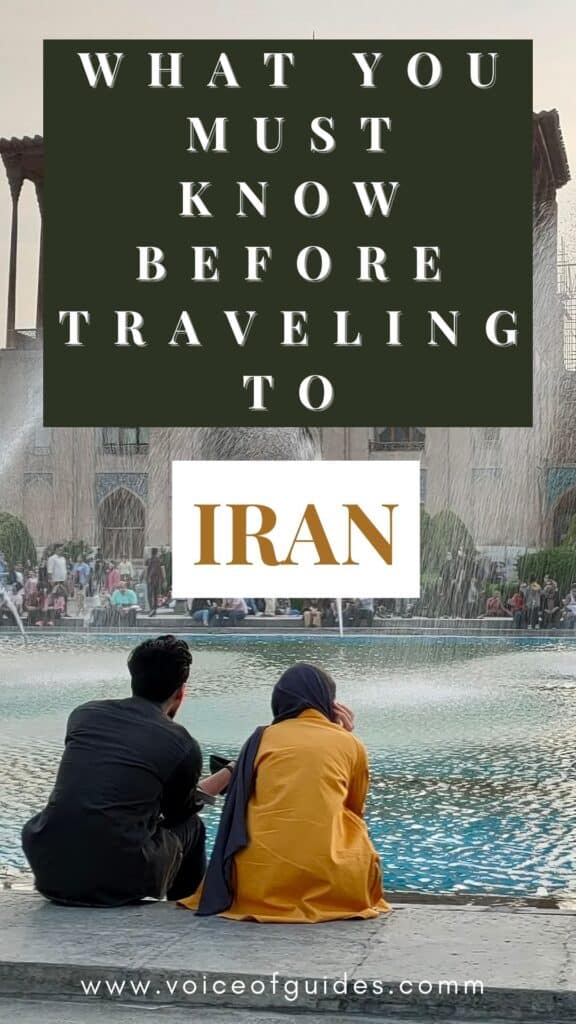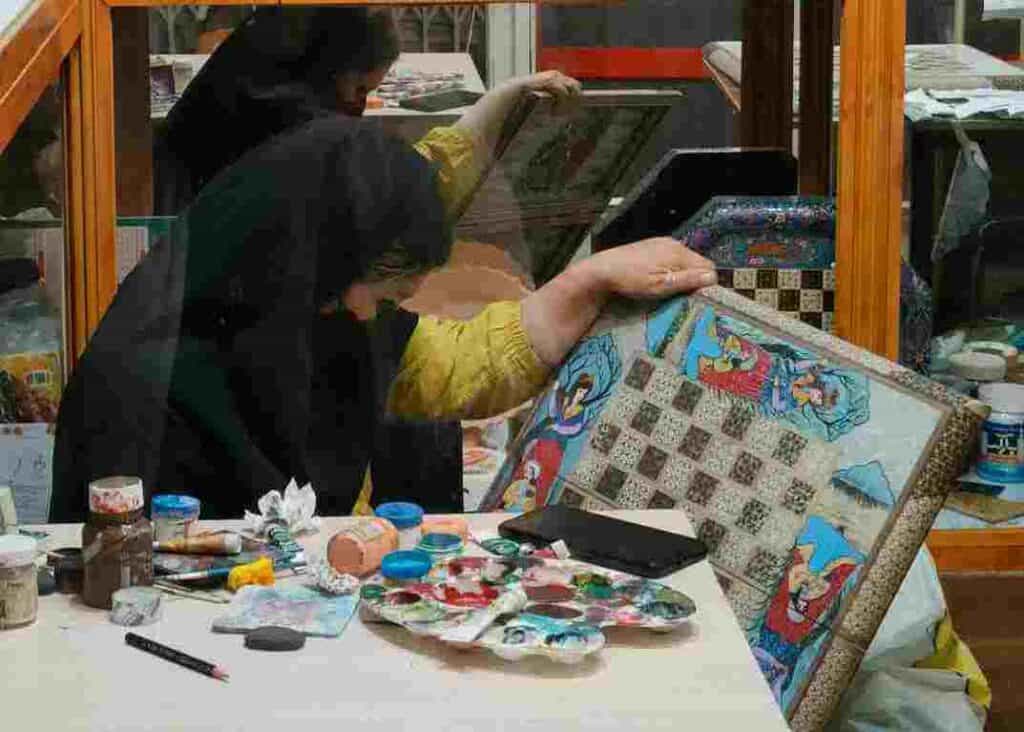This article may contain affiliate / compensated links. For full information, please see our disclaimer here.
You may have already been to Iran, or it is your first time going there. If you are planning to travel for the first time to Iran, you probably have doubts if you should go there at all, if it is safe, and what rules you must keep in the Islamic Republic. Iran is one of the most underrated countries that often gets negative coverage in the media. But if you get first-hand experience, then you realize it is one of the safest and most beautiful places in the Middle East. No wonder many travelers return multiple times. Even if you have already been to Iran, read this travel guide, as some things have changed. Here you find a summary of all the essentials before traveling to Iran, including entry restrictions, dos, and don’ts in Iran, visa rules, safety, public transport, culture, traveling solo or in a group, and many other useful tips for travelers to Iran.
- 1. Persia or Iran?
- 2. Join the See you in Iran Facebook Group
- 3. The best time to travel to Iran
- 4. Travel during Nowruz: is it a good idea?
- 5. Travel to Iran during Ramadan
- 6. COVID travel restrictions to Iran: vaccination or PCR test
- 7. Compulsory travel insurance
- 8. How to travel to Iran?
- 9. Is Iran safe for travelers in 2024?
- 10. Prices in Iran
- 11. Iran is a great place for backpacking
- 12. Solo female traveling to Iran
- 13. How to get a tourist visa to Iran in 2024? (use a local agency!)
- 14. How to get a local sim card?
- 15. Should you bring cash, or can you use your credit card in Iran?
- 16. MahCard: travel debit card for travels
- 17. Where to change money upon arrival in Tehran?
- 18. The local currency: Iranian toman vs. Iranian Rial
- 19. Public Transport in Tehran
- 20. Public transport in Iran
- 21. Driving a car in Iran: better not to!
- 22. Timing in Iran
- 23. Hitchhiking in Iran
- 24. How to book your bus/train and flight ticket in Iran?
- 25. How to book your accommodation in Iran
- 26. Homestays and Couchsurfing
- 27. Sleeping in a hotel as an unmarried couple
- 28. Can non-heterosexuals travel to Iran?
- 29. Men and women relations in Iran
- 30. Bars, discos, nightlife, smoking and drinking alcohol in Iran
- 31. Use Virtual Private Network to get access to blocked sites
- 32. Do not take photographs of government buildings or sensitive areas
- 33. What to wear as a foreign traveler in Iran?
- 34. Don’t blow your nose, don’t show thumbs up!
- 35. The best souvenirs from Iran
- 36. Do you want to know more about Iran?
- 37. Movies about Iran
- 38. Ethnic groups and languages in Iran
- 39. How are the Iranian people
- 40. "Taaroof "
- 41. Religion in Iran
- 42. Nose job in Iran
- 43. Clerics (mullah) with black or white turban
- 44. Persian food: Is it a good place for vegetarians?
- 45. Local cultural tours in Iran
- Other articles about Iran
- More articles about the Middle East
- Pin it for later!
- How to plan your trip to Iran
1. Persia or Iran?
For much of its history, Iran was known as Persia or the Persian Empire to the West. Iran became used outside the country after the 1920s, although most Iranians always called it Iran. The name comes from the Aryan indigenous tribe, hence the title, “the land of the Aryans.” The whole world started to use officially “Iran” only after 1935.
Iran and Persia entail different associations. If you hear Persia, it suggests a glorious, wealthy ancient Empire that abounds in every treasure. But if you hear Iran, it advocates the world of puritan and zealous mullahs (Shia priests) enveloped in cloaks from tip to toe who govern the country with an iron fist challenging human rights.
The glorious pre-Islamic history is an inseparable part of the Iranian identity, although the regime seeks to deny the remnants of the Persian pre-Islamic times. They even wanted to destroy the monuments of this era. But even they could not erase some traditions. Iranians still follow some pre-Islamic celebrations, such as the Persian New Year, Nowruz.
You might be interested in the best 2-week itinerary for your first trip to Iran
This travel guide focuses on the practical things you should know before traveling to Iran. However, if you want to read more about recent history and culture, read my article about the best books about Iran and sign up for my email list and get access to my free travel resource library, where you can download the “Understanding Iran” ebook.
2. Join the See you in Iran Facebook Group
I recommend joining the See you in Iran Facebook group, especially if you travel individually. It is a forum for Iranians and foreigners where you can ask any questions before, during, or after your trip to Iran. At the same time, you can learn a lot from locals about Iran. The group also aims to build bridges between Iran and the rest of the world by communicating unbiased information from locals that probably contradicts what you hear about the country in the media.
3. The best time to travel to Iran
Iran is the “country of four seasons”. It means that any time of the year can be ideal for visiting Iran, depending on which part you travel to. Like other countries in the Middle East, Iran also has expansive desert areas. The Kavir and Lut desert spread between the 4000-5000 meters-high Zagros and Elburz mountains with golden color dunes, unique rock forms, and salt lakes.
But Iran has a much more fascinating landscape. It is enclosed by the Caspian Sea in the north with tropical jungle and the Persian Gulf in the south.
With so many landscapes and climate zones, it is hard to tell when the best time is to travel to Iran. It is one reason that makes Iran an ideal destination; you can travel there any time.
Southern Iran: The Persian Gulf, Kish, Qeshm, Hormoz, and Hengam islands are ideal during the winter months.
Central, East and West Iran: Tehran, Isfahan, Yazd, Shiraz, Ahvaz, and Kerman are best during autumn (September-November) and spring (March-May).
Northern Iran: Urmia, Tabriz, Ramsar, Kandovan, and Masouleh is the best choice during summer. The moderate temperature makes it ideal for escaping from the heat to the mountain villages.
All in all, this is the best time to visit most of Iran.
4. Travel during Nowruz: is it a good idea?
What is Nowruz?
Nowruz is celebrated around 21st March every year. At this time of the year, Iranians go on holiday for two weeks and celebrate. Bazaars get crowded, everyone leaves home, goes on a trip, does picnic and those who have the chance travel abroad. Festival tables are set up everywhere in public places and at home.
The celebration goes back to the pre-Islamic period, thousands of years ago, when the Persians were adherents of the Zoroastrian religion. When spring set in, it symbolized the victory of good over evil, joy over sorrow.
At this time of the year, life stops in Iran for two weeks. On each festival table are the so-called “haft sin” objects (haft= seven, sin= Persian letter S), which refer to seven traditional items starting with the letter S. Each of these objects represents a value:
– sib (apple): health and beauty,
– sir (garlic): medicine that keeps disease and devil away;
– sabzeh (green grass): rebirth;
– samanu (sweet pudding made from wheat germ): power;
– senjed (dried fruit of the wild olive tree): wisdom,
– somaq (kind of spice): the warmth of life,
– serkeh (vinegar): patience.
On the table, you will also find goldfish floating in the glass jar (life), an ornate mirror (purity and honor), small coins (prosperity), painted boiled eggs (fertility), and flowering hyacinths (spring). Often, there is an ornate copy of the book of Hafez, the Persian poet, and that of the holy book, the Quran at the home of religious Muslim families.
Iranians visit each other and bring fruits and seeds as gifts. Children also receive presents, usually money hidden in the Quran (“Eidi”) book, and read the pages from the Quran where they found the money. Of course, the Quran book was added to the Nowruz table later during the Islamic period.
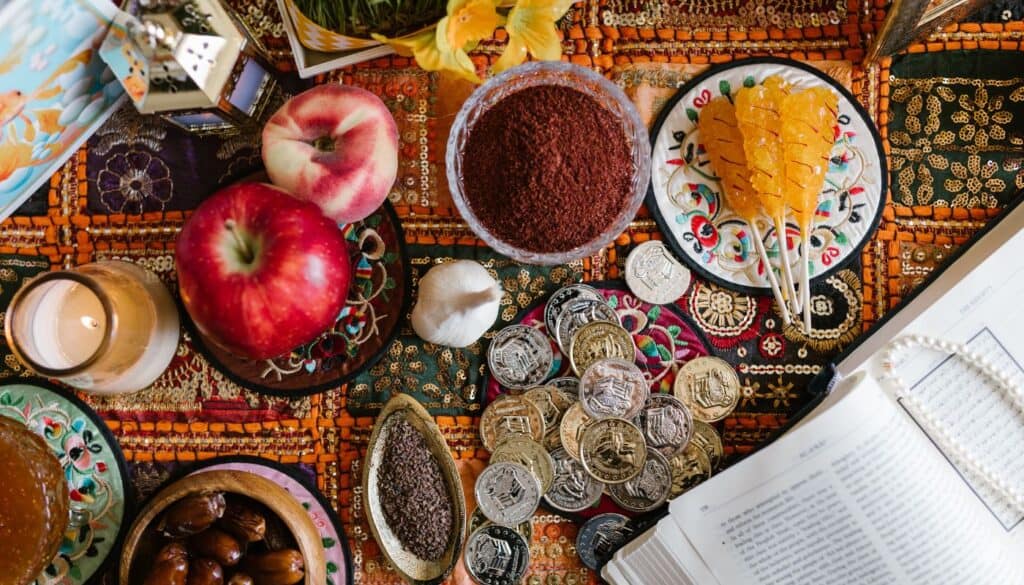
The last Wednesday of the old year is “Chaharshanbe Suri”, the day of the pre-Islamic fire festival. “Chahar-Shanbeh” means Wednesday, and Suri means both: “Red” and “Celebration”. Relatives and friends set a bonfire in the streets and parks and jump over it.
The last, 13th day of Nowruz is Sizdah Bedar: At the end of the two-week celebration, everyone goes to nature to get rid of the unfortunate number 13. Nobody should stay at home on this day because it does not bring good luck. Persians set up tents in fields and parks. Cars and picnic equipment cover the hillsides. While the kids play soccer and enjoy hanging out while the elderly prepare lunch. On this day, it is common to take the germinated grass from the festive table and throw it into a river. Someone makes a knot on it to protect himself from the bad in the New Year. It is common for single people, especially girls, to make a knot on the Nowruz grass and wish to get married that year. While making a knot, unmarried girls sing this poem with joy and laughter:
“Sal-e Dige, 13 be dar, Khuneh-ye Shohar, Bache Baghal” (“Next year, thirteen of Norouz, I will be at my husband’s home, with baby in my hug”).
Older married people also do this for good luck or wish for good health. And then they throw it into the river.
Most travel guide books do not recommend traveling to Iran during Nowruz time in March.
Well, it was too late for me. I only read it when I was already on the plane to Iran, so I became worried. The book said it is hard to find accommodation, bus tickets are sold out, and offices are closed. For all that, foreign travelers are not recommended to travel to Iran during this period.
I cannot agree with that. I only had to search for accommodation a bit longer in Isfahan, but not that there was none. Bazaars were busy with Iranians doing their festival shopping. I did not have any problem buying bus tickets on the spot either. As Iranians are traveling around the country, I could join a group tour with only locals to Abiyaneh from Kashan that otherwise would not have been possible. Only the 13th, last day of Nowruz, Sizdah Bedar, caused me some headache, as there was no public transport at all on this and shared taxis took a while to get full to depart. Private taxis were still available.
For me traveling during Nowruz was an extra experience. I could see the preparations, the Nowruz tables set up everywhere, I was invited to a festive dinner with a family, and I spent the 13th day in nature with Kurdish people in the nature.
All in all, if this is the time when you can travel to Iran, just go ahead!
5. Travel to Iran during Ramadan
Traveling to Iran during Ramadan is more complicated for travelers than during Nowruz. Iran is a theocracy where Islam is strictly observed. All Muslim citizens are expected to fast for a month. Even if they break it, they should do it discretely. Foreign travelers do not have to fast, but since almost all restaurants are closed during the day, it is hard to find something to eat apart from biscuits, ice cream, and drinks. Only restaurants along the highway, where lorry drivers pass by, and the restaurants of hotels serve proper warm meals. In big cities, a few other places are open during the day, but only locals know which. Religious cities like Yazd, Qom, and Na’in take it seriously. Here you won’t find anything open.
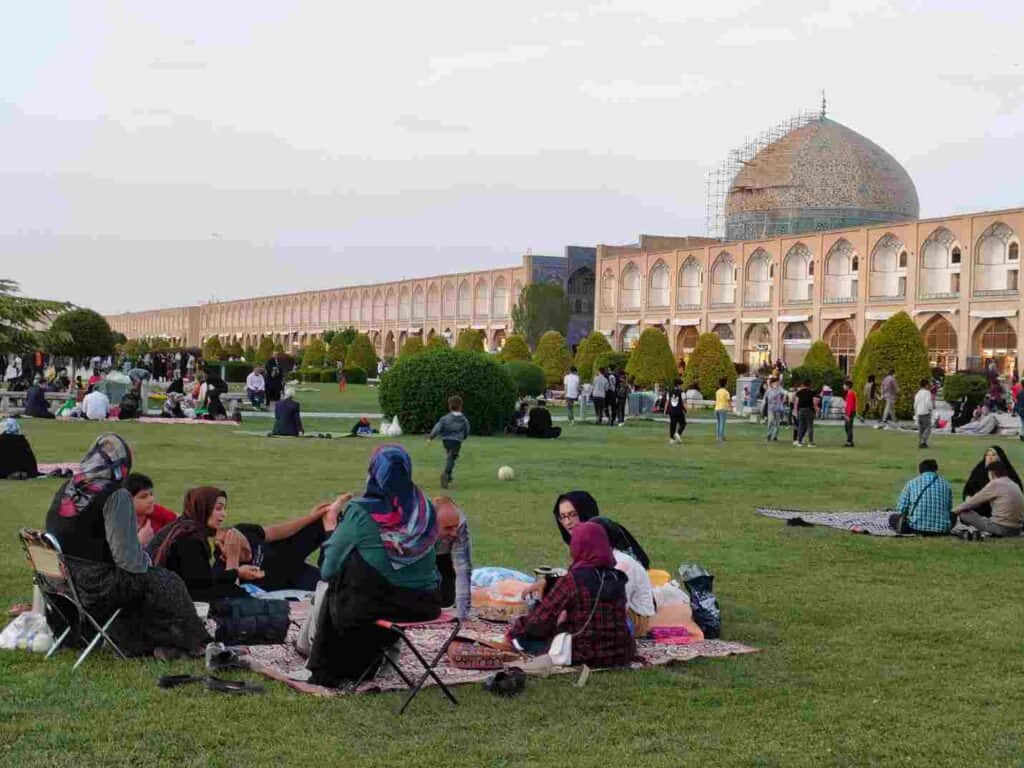
Even if you are not fasting, you should avoid eating and even drinking in public, respecting those who observe the fasting. When Ramadan is during hot summer days, it is even more challenging. But it is not only about eating. During Ramadan, people sleep longer and work less. They spend most of their time at home and often only go out to break the fast after sunset. Empty streets do not have the same ambiance. Ramadan lasts one month, and since it is calculated according to the lunar calendar, its time is not fixed but changes every year. Check before planning your trip the time of Ramadan.
Unlike Nowruz, Ramadan is not the best time to travel to Iran.
6. COVID travel restrictions to Iran: vaccination or PCR test
In spring 2022, Iran opened its borders to tourists and started to issue visas again. Group tours restart, but it is still mainly individual travelers who visit Iran.
As of 1st June 2022, travelers do not need to present a negative PCR test upon arrival if they are vaccinated twice.
7. Compulsory travel insurance
You must have valid travel insurance when you travel to Iran! Without that, you cannot collect your visa at the Iranian Embassy of your country or the airport if you choose VoA (Visa on arrival).
Anyway, never go on a trip without travel insurance because you quickly end up paying enormous amounts if something happens. If you can afford traveling, you should never spare on insurance.
However, most travel insurance companies do not cover Iran. So first, check if your travel insurance applies specifically to Iran.
Some travel insurance contains the term “Asia” or “Middle East”, but that is not enough. Ask your insurance company to issue a document with “Iran” mentioned in the list.
How to plan your trip to Iran
Book your flight to Iran: I always use Google Flights, Skyscanner or Wayaway to find the cheapest flight tickets worldwide. To get an extra 10% for your Wayaway Membership Plus program use my discount code VOG
Important: Booking.com and other common platforms do not work due to international restrictions in Iran. The only exemption is Skyscanner, where you can book both your international flight and accommodation in Iran!
Book your accommodation in Iran: Hostelworld.com offers a limited number of hostels. All other services are only available through local travel agencies, like 1st Quest.
Get your visa to Iran: 1st Quest or Tap Persia local companies can easily arrange your insurance for Iran
Book domestic flights, hotels, transfers, bus and train tickets, and local tours, all in one place via 1st Quest travel agency.
Another good thing is that by using my discount code, you get an extra 5% off your bookings: VOG%1stQ
Virtual Private Network (VPN): Use VPNExpress, the fastest and best Virtual Private Network to get access to blocked sites in Iran and to prevent hackers from stealing your private information.
Insurance to Iran: 1st Quest or Tap Persia local companies can arrange for you visa to Iran
Book local guides and local tours: Pirsik is specialized in offering tour guides and local tours in less touristic countries, including Iran.
I mostly use Safetywing for my travels because it is affordable and covers almost all the countries in the world, but not Iran. So, I had to find local companies that could provide appropriate travel insurance. There are two well-known and highly recommended local companies, which I use also use for my trip to Iran.
– TAP Persia
I used TAP Persia local agency to get the insurance for 25 Euro for a 3-week-trip. Since I also got my visa through them, this price already included a 5 Euro discount. The whole procedure was smooth and went quickly. I can highly recommend their services.
It is another local company that can provide you with insurance and, of course, other services as well (domestic flight ticket, accommodation, tours and visa).
The insurance price is calculated based on the number of days and the age of the passenger. It costs around 20 Euro for three weeks for somebody in her mid-thirties like me.
These local insurances apply to medical, COVID19, dental, lost baggage, lost documents & legal coverage, along with round-the-clock live assistance throughout your journey.
8. How to travel to Iran?
Travel to Iran by air
Tehran and Shiraz have connections to European countries through Istanbul or Doha, but flying to Tehran is the cheapest option to travel to Iran.
Iran Air has a direct flight from Germany from Frankfurt (Wednesdays and Saturdays), Hamburg (Mondays and Thursdays), and Cologne (Fridays).
FlyDubai and Emirates have direct flights from Dubai to Shiraz.
Travel to Iran by land
It is possible to travel to Iran overland from Turkey, Azerbaijan, Armenia, Iraq, and Pakistan. However, in this case, you must arrange your visa in advance as they do not issue a visa on arrival.
From Iraq to Iran
You can officially only cross from Iraqi Kurdistan to Iran, where two border crossings are open for travelers: the Piranshahr/ Haji Omran (closer to Tabriz on the Iranian side) or the Bashmaq/ Penjwen border (closer to Tehran on the Iranian side).
If you plan to travel from Iran to Iraqi Kurdistan, it is easier as you can get a Visa on Arrival for one month.
You can enter via flight from Iraq to Iran and get your visa on arrival based on the authorization code you got from a local agency (highly recommended). If you come via land, you must get your proper visa ahead through the Iranian Embassy in your home country or where you are located.
Read more about visiting Iraq as a tourist
From Armenia to Iran
Agarak/Norduz border crossing. Read more about how to cross from Armenia to Iran here.
From Turkey to Iran: Iran has three border crossings with Turkey, but two are closed due to COVID. You can enter Iran at the Gürbalak border crossing from Turkey.
From Pakistan to Iran: Mirjaveh is the main border crossing between Pakistan and Iran. For more information about how to cross both ways, read this article.
From Azerbaijan to Iran: Bilasuvar and Astara are the two main border crossings. Crossings between Iran and the Nakhchivan Autonomous Republic, a landlocked exclave of the Republic of Azerbaijan, are at Jolfa/Julfa and Poldasht–Shahtakhti.
In this article, you will find all the information about border crossings between Iran and the neighboring countries.
Travel to Iran by ferry: There is a ferry from Dubai to Bandar Lengeh, from Sharjah to Bandar Abbas, and from Kuwait to Khorramshahr. However, finding the exact schedule is even confusing for Irani people. If you are interested, it is better to ask a local agency, like 1st Quest, to help you get up-to-date information.
9. Is Iran safe for travelers in 2024?
Despite its negative media coverage, you might be surprised that Iran is one of the safest countries for travelers and an ideal destination for solo female travelers. It is safe to walk around at night and take the night bus, which is advisable from time to time to make the most of your time as there are huge distances.
Like before, you should be more careful at the border regions with Afghanistan in South Khorasan Province and Pakistan in Sistan and Baluchistan province, which is the primary drug trafficking transit road. Here, you should not be out late in the evening.
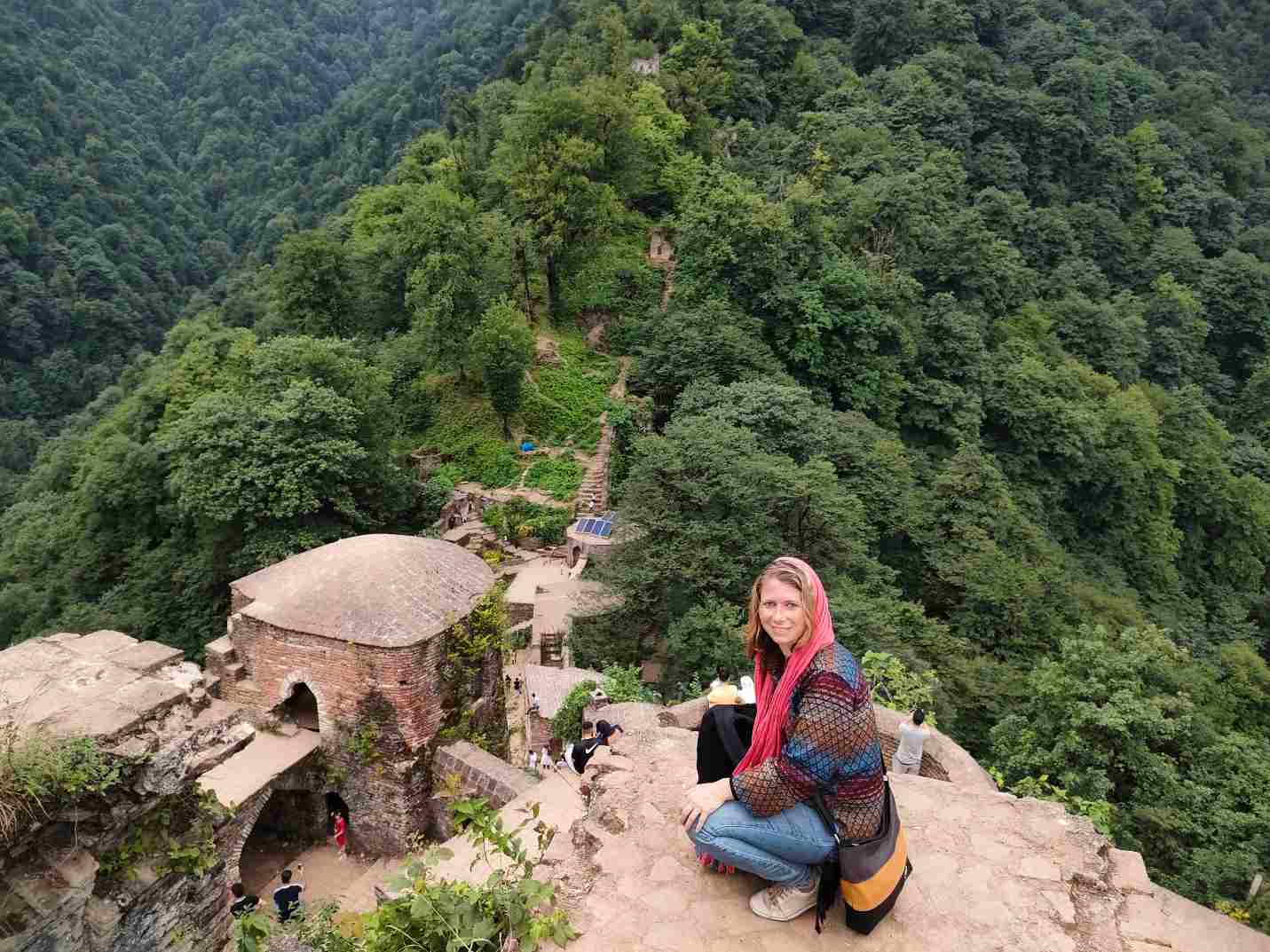
The severe economic crisis that hit the country under international sanctions, topped by the pandemic and other political events, and the devaluated currency pushed many people into poverty. Consequently, there are more cases of stealing, especially on mobile phones. Beware of your mobile phone and do not openly show your money. Besides that, Iran is still one of the safest countries to travel to.
Iran was criticized for imprisoning seemingly innocent tourists with the charge of being a threat to national security as spies. However, in general, it is true that the citizens of certain nationalities are often victims of political maneuvers and used as pawns. People with double citizenship are more often targets. Some governments do not advise their citizens to travel to Iran due to such cases. Tourists are probably under surveillance in Iran, but if you do not take photographs of restricted objects, installments, border regions, or other critical sights, there is nothing to worry about.
10. Prices in Iran
Iran is one of the cheapest destinations now. Since international sanctions have been imposed on the country, the Iranian Rial has devalued. It is worth ten times less than a couple of years ago. All that made Iran significantly cheaper for foreign travelers.
Locals, on the other side, face significantly increasing prices coupled with the devaluated currency. It is not easy at all for Iranians. Traveling there as a tourist and spending money in Iran, you actually help locals. Be generous as much as your budget allows.
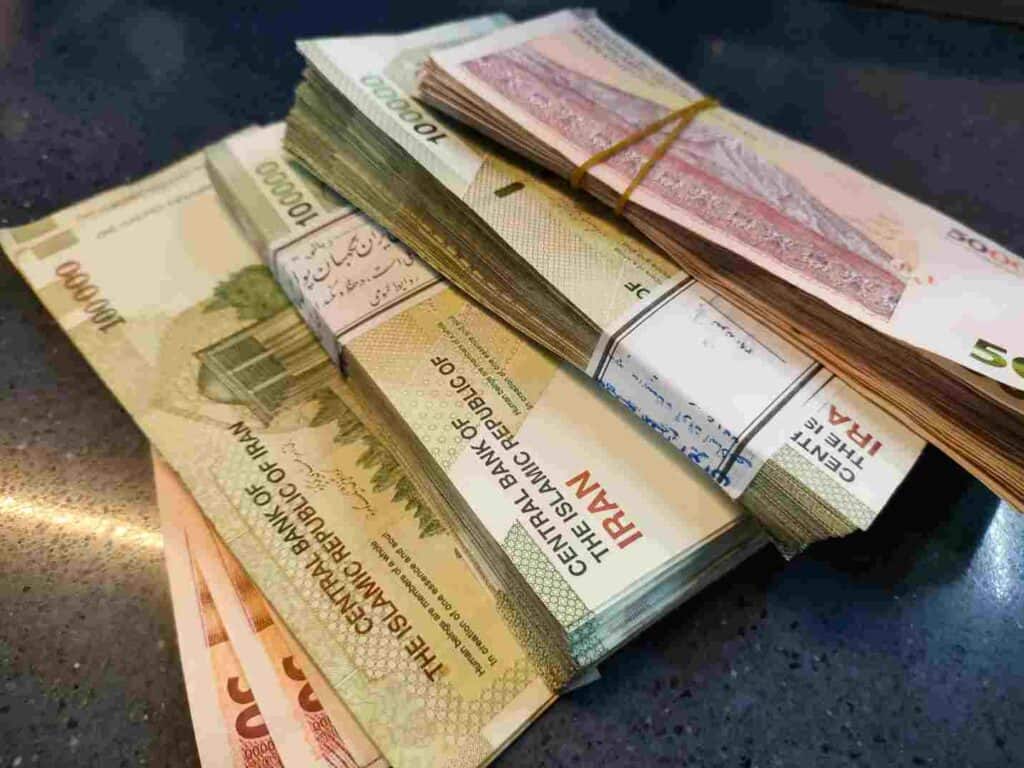
Here you find the price of some things in Iran (January 2024) with 1 USD~490 000 IRR:
Half a liter of water: 15 000 – 20 000 IRR
Bus ticket Tehran Isfahan ~ 1.3 million IRR
Fresh juice: 300 000 IRR
Sandwich: 300 000 IRR
Hostel room with shared bathroom: 1. 3 – 2 million IRR
Private room in a hostel with bathroom: 2 – 3 million IRR
Dinner in a restaurant: 1.5 million IRR
Entrance fees for foreigners: 100 000 – 2.5 million IRR
11. Iran is a great place for backpacking
Iran is a perfect destination for backpackers as it is a cheap travel destination with many hostels and excellent transport connections between the cities. People are friendly and try to help you if you face any problem, although most people do not speak English. But this can be solved nowadays with google translate. You cannot drink alcohol and have to wear an appropriate dress, but all this becomes irrelevant to what you see and experience in return.
How to spend two weeks in Iran
12. Solo female traveling to Iran
You may be surprised that Iran is one of the best travel destinations for solo female travelers. I already mentioned above that it is one of the safest countries in the world. However, there are many other reasons. Iranians are generally very educated, which shows their behavior towards women. You may have been to Egypt or Jordan, where, unfortunately, often make you uncomfortable with endless compliments, wedding proposals, and pushy behavior declaring they are in love and asking for your phone number only after a few minutes. Well, this is certainly not the case in Iran. I only got kind invitations from locals to spend time with their families without any back thoughts.
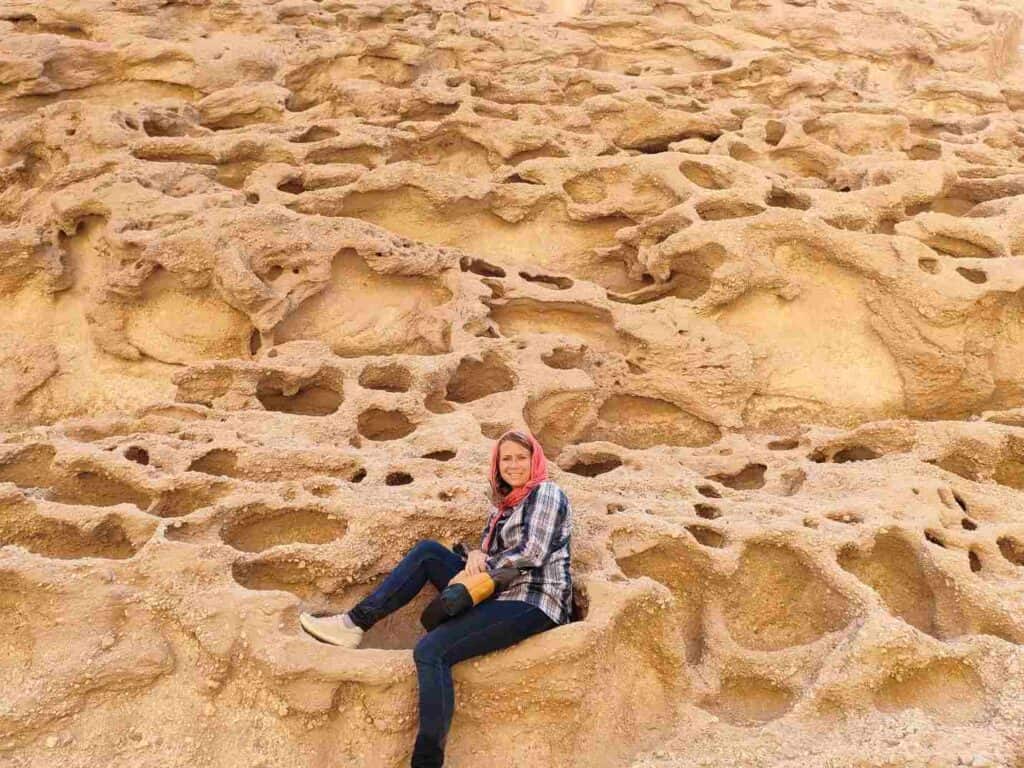
It is an advantage to travel around as a woman, as it is not something that widely exists in Iranian culture. So people get curious about seeing a woman alone, offer their help even more, and express their appreciation that you are so adventurous.
Public transportation in Iran is excellent, making it easy to get around even for less experienced travelers.
Of course, things can happen everywhere, and there are exemptions, but Iran is probably the best travel destination for solo female travelers in the Middle East.
My first visit to Iran as a solo female traveler was so memorable that I wrote a separate post about that. Or ask any other female travelers; they almost all have wonderful memories of Iran. The ambiance in Iran put me at such ease after my first visit that I didn’t even hesitate to return and discover other places, like northern Iran.
13. How to get a tourist visa to Iran in 2024? (use a local agency!)
As so many questions are popping up about applying for a visa to Iran, I made this section in a Q&A form.
How to arrange your tourist visa through a local company?
Before the pandemic, you could arrange to get a visa at the Iranian embassy in your country of residence.
Now it is more difficult to get a visa to Iran than before, as individual travelers often get rejected. It is now better to contact a local travel agency, like TAP Persia or 1st Quest, who apply for your visa on your behalf.
In this case, you can expect your visa to be approved within 3-4 working days, but usually no more than seven business days. (Remember that in Iran, Thursday and Friday is weekend). Still, local agencies recommend that you apply 3-4 weeks ahead. I was flexible with the exact day of my departure, so I waited for the visa authorization code (it took 4-5 working days as they seemed to have forgotten mine), and I booked my flight ticket after.
You have to go to their website, fill in a form, and upload the relevant page of your passport and your ID photo. You will get a link through which you can pay the administration fee of 20-30 euros.
There is one more travel requirement for traveling to Iran as of 2022. You need to give a day-by-day itinerary with your destination and the name of the hostel/hotel you stay at. The local company will provide a form for that. Don’t get scared too much. It doesn’t mean you cannot change your plans. Especially if you are a solo traveler preferring spontaneous travel, you probably do not know exactly how your trip continues. Just make a rough plan, as it is a new administrative obligation for local companies towards the government. I was never contacted during my trip where I am exactly.
The chance of getting a visa through local companies is almost 100%. Of course, citizens of the UK and US, Canada, and ABC countries (Argentina, Brazil and Chile) and those in certain professions get rejected more often. The rejection rate is higher if you try to get your visa through the Iranian embassy of your country or the MFA website (Ministry of Foreign Affairs).
How long does it take to get the VoA at the airport?
It was very fast for me; I was the only tourist upon arrival.
Kish and Qeshm; the few exemptions where you do not need a visa to Iran
If you are otherwise entitled to get a VoA to Iran, you can visit Qeshm and Kish islands in the Persian Gulf without a visa for a maximum of 14 days.
How long is the tourist visa valid?
The tourist visa is valid up to 3 months after the date of issue, and you can stay for 30 days in Iran. You can extend it twice for 30 days.
How does the Visa on Arrival (VoA) work?
You get a confirmation code to get your visa on arrival (VoA) at the specified airport, land border, or your country’s embassy. However, if your travel date is near, your only option is to get it at the airport.
Citizens of 180 countries are entitled to VoA with some exemptions. Pakistani nationals are not eligible for VOA. Check if your country is on the list of the permitted countries for VoA to Iran.
How much is the tourist visa to Iran?
The Visa on Arrival (VoA) costs 75 Euro +2 Euro administration fee.
If you arrange your visa at your country’s embassy, you spare some money; in this case, the visa costs only 50 euros for European citizens. However, getting the VoA for some extra fee is the most convenient as you never need to show up at the Iranian embassy in your country. So, you actually save time and money with the VOA.
Which citizens do not need a visa?
The citizens of the following countries travel visa-free to Iran: Citizens of Armenia, Azerbaijan, Bolivia, China, Egypt, Georgia, Hong Kong, Lebanon, Malaysia, Oman, Syria, Turkey, and Venezuela can enter Iran without a visa.
Is there a multiple-entry visa to Iran?
No. The tourist visa is only valid for a single entry and 30 days, although you can extend it twice.
Can you travel to the US and Israel after Iran?
Iran has not given a stamp on your passport for a couple of years. (nor Israel), which means there will be no sign of your visit to Iran.
Can US, UK, and Canadian citizens travel to Iran in 2022?
Yes, they can, and they get an equal welcome in Iran from the locals. Don’t think that because of the two countries’ strained relationship, American tourists get harassed. Iranians are so nice to tourists. The only restriction is that American, British and Canadian citizens must have a local tour guide or go with a group. As of May 2022, even Irish citizens must be accompanied by a tour guide.
American citizens may be asked for extra information about their flights and itinerary, but after that, they go through the standard visa application procedure and get an authorization code.
Unlike other nationalities, Americans, Canadians, and British cannot collect their visa from the international airports in Iran. Instead, they must either hand in or mail the required documents and forms, e.g., authorization code, passport, and photos, to an Iranian embassy or consulate. Iran has no embassy or consulate in the US, but there is an Iran’s interest section at the Pakistani Embassy in Washington DC.
I tried to answer every Visa related question; however, there are always specific cases. If you have more questions, contact TAP Persia or 1st Quest local companies who are experts in that.
14. How to get a local sim card?
Upon arrival at the airport, head to the Iranian cell counter, where you can get a sim card. You may have to wait an hour until your passport is registered. Only after that can you get a local sim card (15 GB for 1.8 million rials). I had to wait one hour until my visa was registered. I don’t know if it is common or it was only my case.
15. Should you bring cash, or can you use your credit card in Iran?
Apart from exceptional cases, you cannot use your international credit card in Iran. Due to international sanctions, Iran has no access to the international banking system. You can only use it in some bigger shops when the owner has double citizenship and he has a non-Iranian bank account.
You see several ATMs all over the country, but don’t get confused; it is for local credit and debit cards.
Since the Iran Rial is one of the weakest currencies in the world now, carrying cash would be inconvenient for them.
You can easily change USD and EUR in any big city. It is better not to change too much at once. Otherwise, you need to walk around with a bundle of local money.
16. MahCard: travel debit card for travels
If you really don’t like walking around with cash, there is another option. It is called the MahCard, a prepaid debit card for tourists that you can get by paying a 19 Euro administration fee, which includes card issuance, delivery, currency exchange fees, and round-the-clock customer support.
I heard from other tourists that they could use it without any problem.
You can apply for the MahCard here.
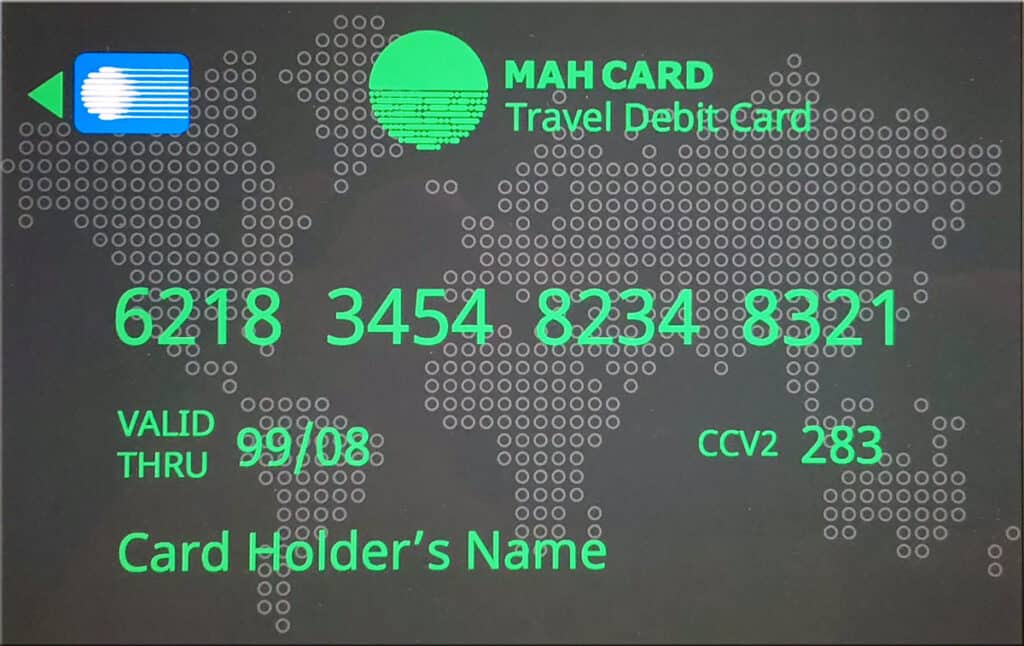
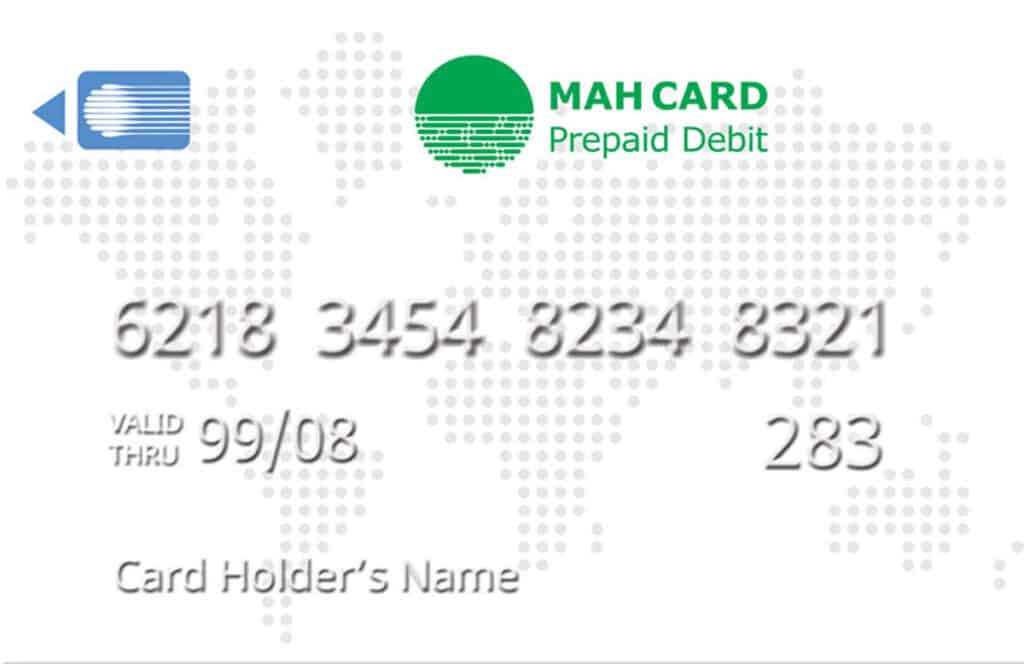
You need to fill in the application form and pay the service fee. Upon arrival, you get the card delivered to your Tehran hotel and have two options to get the card charged.
1. When you get your card at your hotel, they exchange your money and recharge your card with that amount. At the end of your trip, you get back the remaining balance in local currency.
2. You can charge your card online with your credit/debit card. You get your card delivered to your hostel/hotel in Tehran with the amount you transferred. At the end of your trip, MahCard will transfer this amount to your foreign bank account in the same currency as you used.
17. Where to change money upon arrival in Tehran?
Upon arrival, there is one money changer on the first level, the level of departure, where you can also change the euro, dollar, and some other currencies. Some individuals will approach you as well, offering a better rate. I preferred changing at the official counter.
You can change money upon arrival at Khomeini airport. Unlike in other countries, the airport rates in Iran are fair. Hotels can also change money for you but usually offer lower rates.
Another option is to change money in the city center around Ferdowsi square in one of the exchange offices.
Street changers are offering to change black from them. It is up to you, not that I have never done that, but you should know that it is illegal and not always reliable. Occasionally, travelers report having received fake notes.
18. The local currency: Iranian toman vs. Iranian Rial
The Iranian currency is confusing for travelers, and there are some things you should know about it.
The official currency is Rial (IRR), but in daily life, they calculate almost everything in toman. 1 toman= 10 Rial. There are plans to change the currency of Oran to toman and cut four zeros, but so far, it has not happened.
Always ask if the given price indicates toman or rial to avoid misunderstanding.
The exchange rate you find on the internet (1 USD~ 42 000 IRR) is not what is used in Iran. The real exchange rate you can find here: https://www.bonbast.com/
In January 2024, one dollar is 470,000-490,000 IRR, and one euro was 510,000- 530,000 IRR, but it can be very different some months later and even changes daily. It is pointless to discuss and compare who paid what for a hotel, transport a year, some months, or a day ago.
For 100 dollars, you get 47-49 million dollars. Since the 1 million note is the highest, you probably get 500 000 and 100 000 banknotes, which is a bunch of money in your pocket. It is easy to get confused with the big numbers, so always check if you got the right amount of rial.
Prices are always given in Persian and not Arabic numbers. So it is very useful to memorize the numbers as follows.
1 – ۱ yek
2 – ۲ do
3 – ۳ se
4 – ۴ chahâr
5 – ۵ panj
6 – ۶ shesh
7 – ۷ haft
8 – ۸ hasht
9 – ۹ noh
10 – ۱۰ dah
If you want to know more about how the Iranian has become the weakest currency in the world, read this article.
19. Public Transport in Tehran
How to get to Tehran from the Imam Khomeini International airport?
Taxi
You can take a taxi to get to the city from the airport. It has a fixed price and costs approximately 1 700 000 IRR (7$).
Metro
You can also use the new metro they extended to Khomeini Airport in 2017. It works between 05:00- 22:00, and the 1 1/2 hour ride costs 90,000 IRR. But the metro on this line is not as frequent as in the city, so you may have to wait.
Although you see a bus sign, this does not exist.
How to use public transport in Tehran
Metro
The best way to travel in a city of 14 million is to take the metro (15,000 IRR). Itis an experience, and as a woman, you can use the “only-women” compartments. Women travel in the first two carriages of the metro (“women only”); the rest are for men and women. On buses, women travel in a separate section at the back of the bus. However, there is no such restriction with shared taxis.
Green taxi
For shorter distances, you can also use a yellow or green taxi. You always have to negotiate the price first.
Bus
Or you take a bus, but in a traffic jam, it is slow (which is very common), and the first time in Tehran, you are probably not very familiar with the lines. The bus ticket cost varies, but it should be around 15,000 IRR.
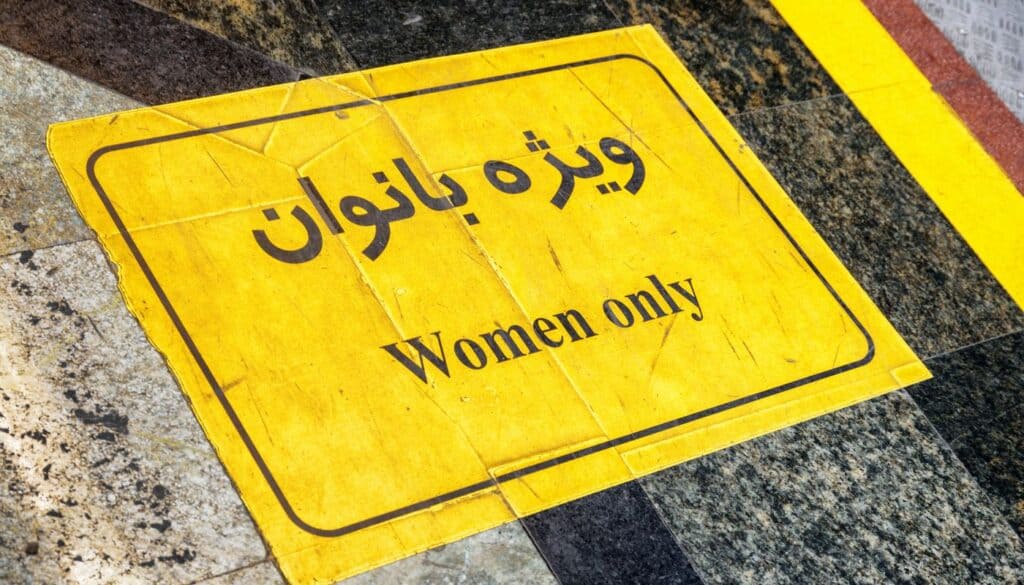
Download the Snapp application
For independent travelers, it is an extremely useful application, and you should download it as first thing upon arrival and having a sim card. Another similar application is Tap30. They are like the Iranian version of Uber. This is the cheapest way to get around. You just order the taxi to the place where you are standing and you can follow on the map when the car is arriving. There is no argument about the price as you see the exact price at the time of booking. Plus, since most people do not speak English it makes it easier for you to organize your transport in Iran.
20. Public transport in Iran
The bus is the best and cheapest option in Iran
Public transport in Iran is excellent, with all the major cities connected by buses that are the cheapest and most comfortable way to get around in Iran.
On long-distance buses, women are not separated from men, but if the bus is full, they try to arrange for women to sit next to women.
There are two types of buses in Iran: regular and VIP buses. The latter is slightly more expensive, but VIP buses are extremely comfortable with huge armchairs, similar to the business class seats on the flight, and you can travel in a half-lying position.
Railways also exist but are not so well established and are costlier than taking a bus.
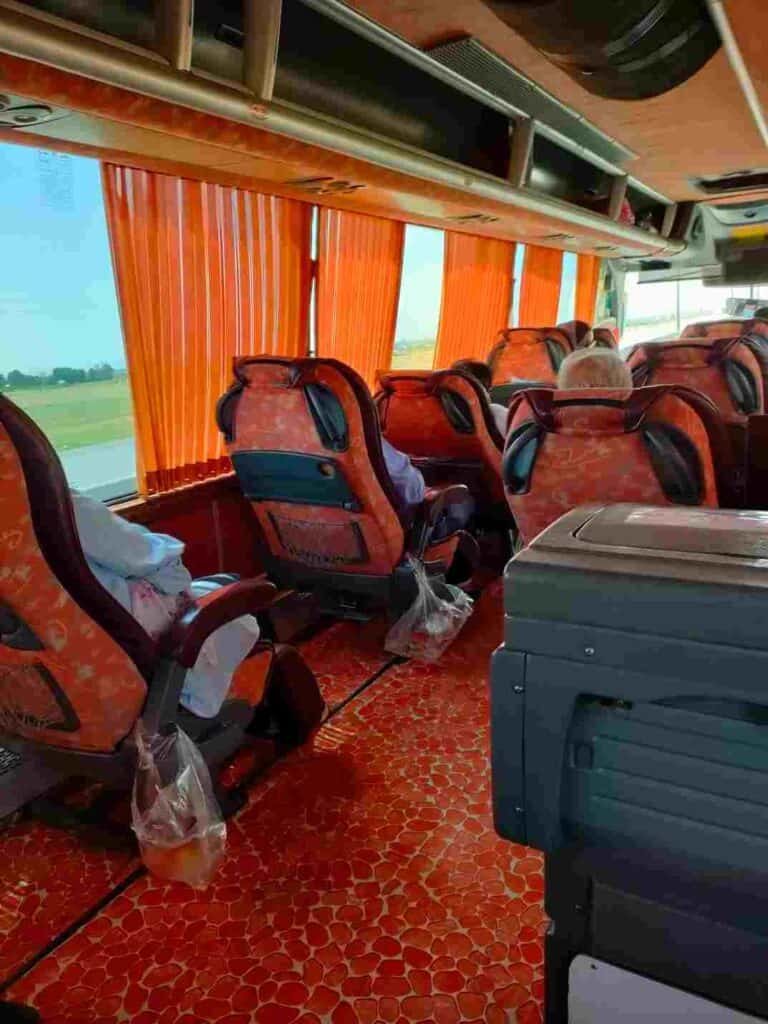
How to go to other cities from Tehran
Tehran has four main bus stations depending on where you continue your journey. Buses depart to many cities from all four bus terminals.
The West Bus Terminal mainly serves the North, West, and Southwest cities.
The East Bus Terminal mainly serves the North, Northeast, and East cities.
The South Bus Terminal mainly serves the cities in the south.
Beyhaghi Bus Terminal serves cities in Northeastern, Western and Central Iran, sometimes in the south. Beyhaghi is a far less crowded, tidy bus station closer to the city center. If you have buses departing from more terminals, it is worth choosing this one.
A shared taxi (savari)
Savari is a popular means of transport in Tehran and between other cities. They have no fixed schedule. The vehicle starts when it is filled with travelers heading in the same direction. In Tehran, they can switch to another taxi at major junctions. Taxis are not always visible as many locals pick up passengers along the road to earn extra money.
Outside Tehran, savaris are usually found at the bigger bus stations, or there is a separate station.
The same taxis can be used as private taxis if you pay the total price. Also, if passengers decide to pay a bit more to cover the cost of the empty seat, they can leave immediately.
Often, taxis automatically offer private rides for foreigners unless you explicitly say you are looking for a shared taxi. In this case, it is handy to know that “dar-bast” means private taxi and “dar-bast na” (means shared taxi).
Only private taxis are available in some remote or smaller places, like South Khorasan, or when you travel to off-the-beaten-track locations.
21. Driving a car in Iran: better not to!
If you want to travel by car to be more flexible, then rent one with a driver.
Iranians seem to be constantly on the road and drive like crazy. Iran has the highest traffic fatalities worldwide. Everyone seems to do what they want without rules when driving a car. Take care when you cross the road. Drivers don’t stop, not even slow down.
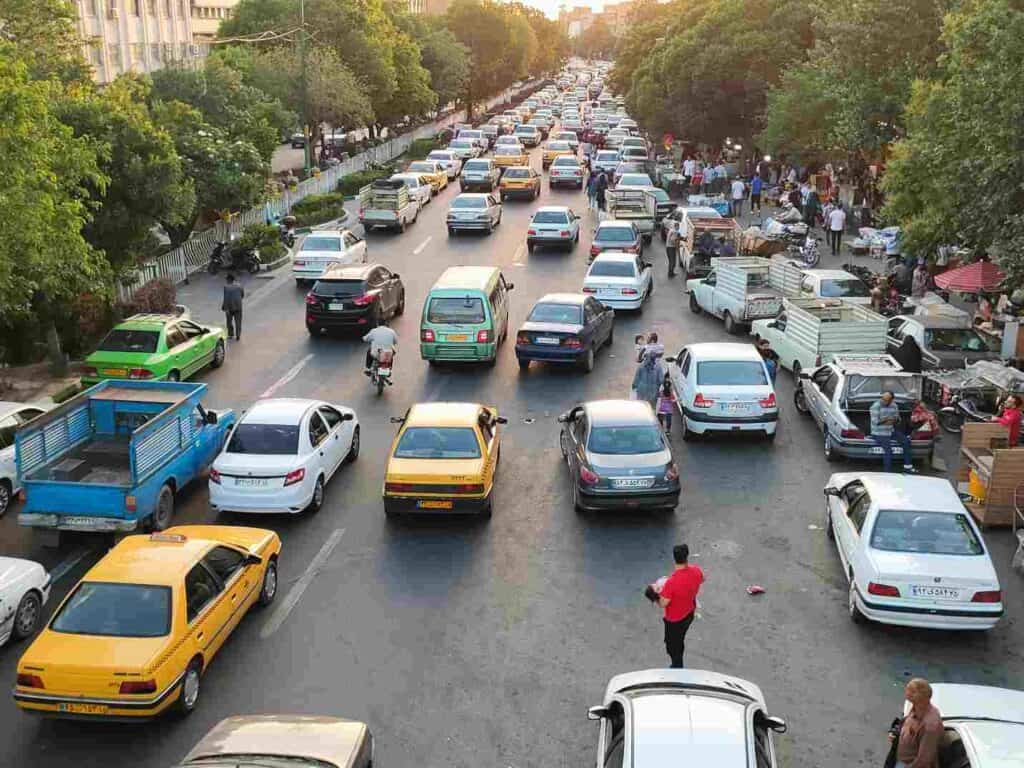
22. Timing in Iran
Due to long distances and traffic, be flexible with timing in Iran. If a bus journey is supposed to take 4 hours, it can easily take 1-2 hours longer. Also, the departure time of buses is often not punctual.
23. Hitchhiking in Iran
There is no problem with hitchhiking in Iran, although if you are a solo female traveler, you should only do it in exceptional cases when there is no public transportation. Between the big cities, it is easy to find buses. However, when you travel to more off-the-beaten-track places in Iran, like South Khorasan Province or northern Iran, there are sometimes no shared taxis between smaller villages. You can take a private cab or ask somebody to take you for a short while, offering some money in return.
People in these regions even stop to offer you a lift without asking. Still, as a woman, you should never travel with a truck driver or anybody at night.
24. How to book your bus/train and flight ticket in Iran?
When it comes to booking your flight, train, or bus ticket in Iran, it is better to turn to a local agency. The booking platforms either do not have an English version or even if they have, they do not accept international credit cards. You can easily buy the bus ticket directly at the station upon arrival as the big cities are connected with regular bus services.
When you travel during festival time, like Nowruz, or other Islamic holidays when Iranians have a long weekend, try to get a ticket earlier through your hostel as they are easily sold out.
Check 1st Quest for booking your hotel, tours and domestic flights
Travel by train in Iran
There are several train routes in Iran. However, not all cities are connected with daily train routes. Therefore, organizing your trip by train can be complicated. The train is significantly more expensive and gets sold out faster, especially during holiday times.
You can check the train tickets here: https://www.iranrail.net/map.php
It is better to ask your hotel or a local agency to help you find the best option.
Domestic flights in Iran
Mahan Air and Iran Air are the two most reliable airlines in Iran. Domestic flights connect the major cities, but they operate at lesser intervals. Due to the U.S. embargo, the supply of spare parts is limited, which renders it obsolete. Thus, the local airlines can only operate with fewer flights.
Tehran is the primary flight hub connecting to all major and even small cities in Iran. It is a great way to shorten your transport time and make it less tiring. Domestic flight tickets cost around 40 – 70 USD.
25. How to book your accommodation in Iran
Although Iranian hotels are not featured on regular platforms like booking.com, Agoda, etc., due to the international sanctions and not because there aren’t, there are plenty of hotels for each budget, hostels, guesthouses, and homestays. Skyscanner is the only international website through which you can book a hotel in advance.
You can book hostels through hostelworld.com, but they are not available in every city or via local agencies. Otherwise, you need to find accommodation upon arrival. This is how it works in Iran.
Look for traditional guesthouses
Traditional guesthouses are fantastic and are found in almost every bigger or smaller city. They also have different categories. But even the cheapest ones have such a lovely ambiance that it is one of the attractions. Check out the following, and you will know what I talk about:
Tarooneh traditional hotel in Yazd
Look for other hotels in Iran here
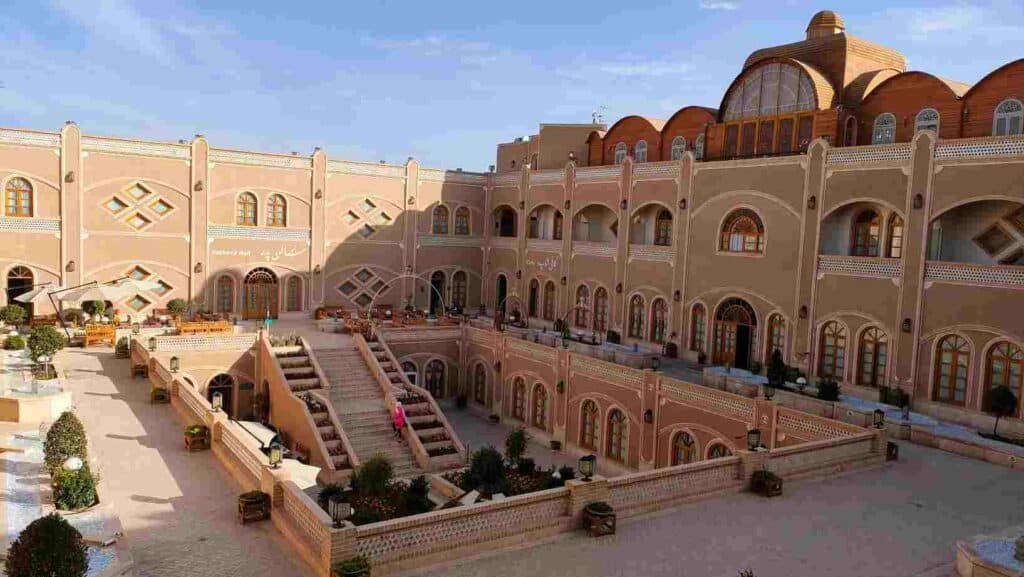
26. Homestays and Couchsurfing
You should know that homestays and Couchsurfing are illegal in Iran, although you see both available online. Just because something is banned does not mean it does not exist in Iran. This is the parallel life of Iran.
Many travelers openly talk about their stay with their hosts through Couchsurfing; however, I don’t recommend doing that because it is officially not allowed. It is a nice way to interact with locals but do it discretely and don’t boast it on social media to avoid causing a problem for your host.
27. Sleeping in a hotel as an unmarried couple
Foreigners can sleep in a hotel without marriage, which is not the case for Iranians. Nobody will ask about your wedding papers if you are both a foreigner. If one of them is Iranian, they cannot stay in one room, although there are always some places that won’t make a problem.
28. Can non-heterosexuals travel to Iran?
Yes, they can, but they should not promote that!
The Iranian regime does not care that foreign tourists are gay if they do not show affection in public places (the same applies to everybody) and do not openly talk about their relationship. Before applying for a visa as a gay or lesbian, it is better to remove the related social media content to avoid further questions.
If men and women of the same sex get caught during sexual interaction, both can face a death sentence. It applies to foreigners too.
Strangely, transgender people are acknowledged and get financial support from the state for their operations.
Like other South-Asian countries, Iranian men walk hand in hand and kiss each other on the face in the street. It is not because they are homosexuals. It is part of the culture.
29. Men and women relations in Iran
How to approach a woman in Iran as a foreigner?
If a male tourist wants to talk to an Iranian woman, he must ask her first. If the woman agrees, they can talk to each other. Young people are usually happy to chat with tourists unless they are women with conservative Islamic attitudes and refrain from conversation.
It is also better not to shake hands with a woman in Iran. But if an Iranian woman wants to shake hands, you can return that.
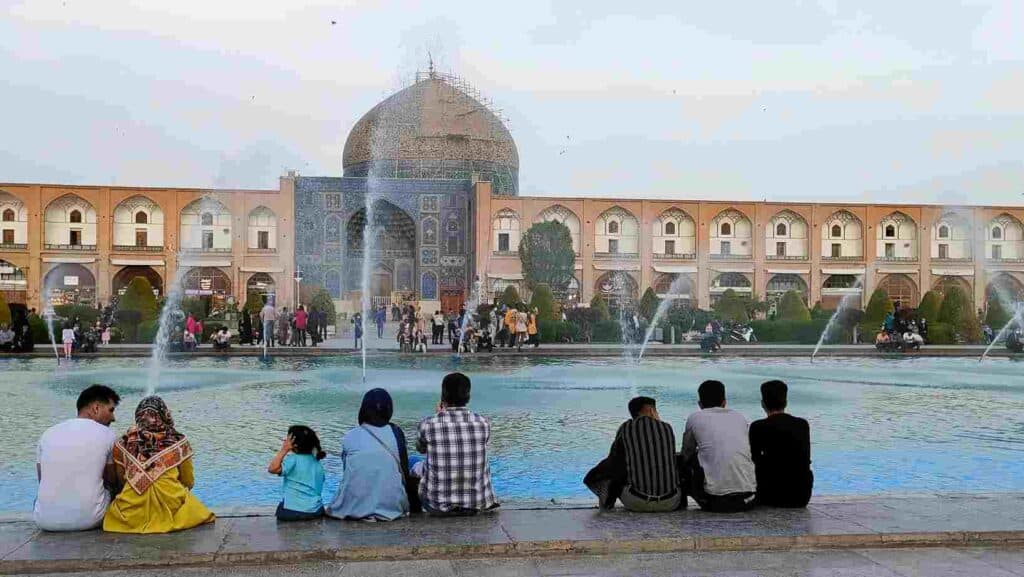
Avoid public affection in Iran
After the 1979 revolution, male-female relationships were restricted by Sharia law in Iran.
Men can only kiss or talk with their relatives according to Islamic law. Men can only kiss or shake hands with their mother, sister, niece, grandmother, aunt, and mother-in-law. Women can only kiss and shake hands with their father, brother, uncle, grandfather, husband, niece, and father-in-law. Any other contact between men and women is prohibited.
Government control was stricter over the youth in the first two decades after the 1979 revolution. But with the new generation daring to confront the rules, the regime had to mitigate the restrictions over the last two decades. So, the atmosphere has become a little freer.
You can now occasionally see girls and boys holding hands, talking in the streets and public parks. If a man and a woman want to get to know each other, they can go on a date. It was unimaginable some time ago.
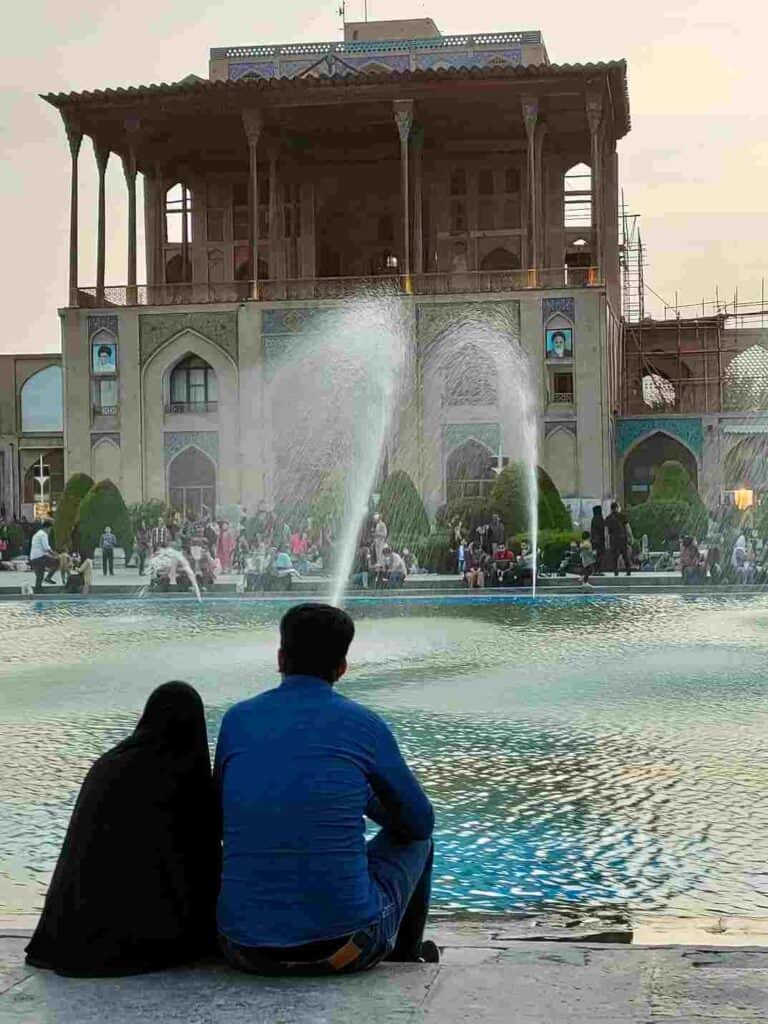
They are still limited to talking, and no sexual relationship is allowed. According to Sharia law, men and women can only meet a few times before marriage. After a few meetings, they have to decide what they want. If they do not plan a wedding, they have to stop dating. Girlfriend-boyfriend relationship is not allowed.
But in recent years, young people started to have relationships and are not afraid to show that in public.
The moral police will not punish them for talking and walking without being married, only if they kiss and hug in public places.
30. Bars, discos, nightlife, smoking and drinking alcohol in Iran
In short, apart from smoking, all that is forbidden in Iran.
The ban on alcohol applies to foreigners as well. You cannot buy alcohol in Iran; there are no bars, only cafes and restaurants in Iran. These sell alcohol-free beer with different flavors. The most common for men to spend their evenings is going to a café to smoke shisha.
If you think about packing alcohol in your luggage, forget about that. Since the luggage goes through the X-ray, it can be easily spotted and can cause you trouble.
It is also not like Dubai, where non-Muslim foreigners working in the country can get an alcohol permit or the hotel bars serve alcohol. In Iran, there is no exemption for foreigners. Only the Christian Armenian community is permitted to produce alcohol legally for religious purposes. So, it won’t be a surprise that they are the primary source to get alcohol in Iran.
Others produce spirits at home, everything from wine to whiskey that they learned during the time before the revolution.
These strict rules were introduced after the Islamic revolution of 1979. Earlier, discos and nightclubs existed. There were occasional restrictions on alcohol before 1979, but it was never completely banned. Just think about the Shiraz wine that was exported all over the world.
Still, alcohol is available on the black market like everything else. So, the answer to whether you can somehow get alcohol in Iran is yes though it is not cheap and illegal. Several people are flogged or arrested for producing, selling, buying, and consuming alcohol every year. House-made alcohol is, of course, not the most reliable in the lack of standards, so several people get poisoned every year.
Both women and men can smoke legally in Iran. Smoking cigarettes or nargileh is more common among men, as women are not always seen well, so they rarely do that in public.
This is a detailed guide about what you can and cannot do in Iran.
31. Use Virtual Private Network to get access to blocked sites
There is strict censorship in Iran, and the government denies access to a range of websites and applications on different grounds.
The following commonly used apps and sites are banned in Iran: Viber, Twitter, Facebook, Youtube, Snapchat, Tiktok, and Tinder. American news sites like BBC, Fox News, CBS News, CNN, and NBC are also not accessible. As usual, there is a way to avoid it, and most Iranians still have access to every kind of content and application, and you can also do that.
You need to download a VPN (Virtual Private Network) to access anything blocked by the regime. The main problem for foreign tourists is when the host country restricts access to social networks and sites for users located in Iran. The PayPal software and Tinder dating site or some online stores such as Amazon are blocked through the IP address of Iran. VPN does not help you in this case. However, you can access several other platforms by downloading a VPN to your phone, tablet, computer, or router.
The reason to use VPN: It prevents hackers from stealing your private information, especially when using a public Wi-Fi network.
By connecting to a server outside Iran, you can browse all the sites and services blocked in Iran.
Price, security, speed, and the number of servers it is connected to are the main factors when choosing the best VPN (Nord VPN, Private VPN, Express VPN). These VPNs all have a free version that you can use for a limited time, but they are very slow, and it is a little annoying to reconnect all the time and deal with tons of ads popping up. I could not access many sites even. You can still manage your trip through Iran if you want to look up some information, use social media, and keep in touch with family.
However, you need reliable, fast, and secure internet service to work efficiently.
You should know that using VPNs is illegal in Iran, but everybody does that without a problem.
Express VPN is the fastest and most secure VPN service and the most expensive. However, they have a special deal for 15 months, including three months for free for 6.67$/month and a 30-day money-back guarantee. This is a great deal now.
NordVPN (5$/month for two years + 3 months for free) and Private VPN (2$ for three years) offer even lower prices through 2-year-plans.
32. Do not take photographs of government buildings or sensitive areas
Do not take photos of government buildings, military establishments, or sensitive areas. If you are not sure if you can, then better to ask. Especially the border areas can create problems. Some tourists had problems taking photos in restricted areas around borders and were arrested.
33. What to wear as a foreign traveler in Iran?
The dress code in Iran for women travelers seems. Iran does not make an exemption for foreign travelers; the same rules apply to male and female tourists traveling to Iran as to locals. There is a lot of confusion about what you can and not wear in Iran, but you definitely do not have to wear a chador as most people think. The official dress code in Iran is strict, but the practice is much more relaxed. Also, there is much more to know about the story of the hijab/headscarf in Iran. So I made a separate post about that, which answers all your questions about clothing in Iran.
Read this separate post about the importance of the hijab and what you should wear as a male and female traveler in Iran.
34. Don’t blow your nose, don’t show thumbs up!
It is not polite to blow your nose in public in Iran and other Asian countries. You don’t see locals do that as we consider it impolite and disgusting. If you need to, go to the bathroom or some discrete place.
Showing thumbs up is insulting in Iran. It is the same as showing your middle finger, so try to avoid that.
These are some unofficial rules in Iran.
35. The best souvenirs from Iran
Although I’m not a shopping type, Iran is a great place to find treasures, especially in the historic bazaars. Iran is one of the few countries where bazaars are still the primary choice for locals to do shopping, and shopping malls have not replaced them yet. The most famous bazaars of Iran are in Isfahan and Tabriz. But every city has its own.
Handicrafts, like wooden carvings, metal works, and pottery, are some of the best souvenirs if you are looking for something to decorate your home.
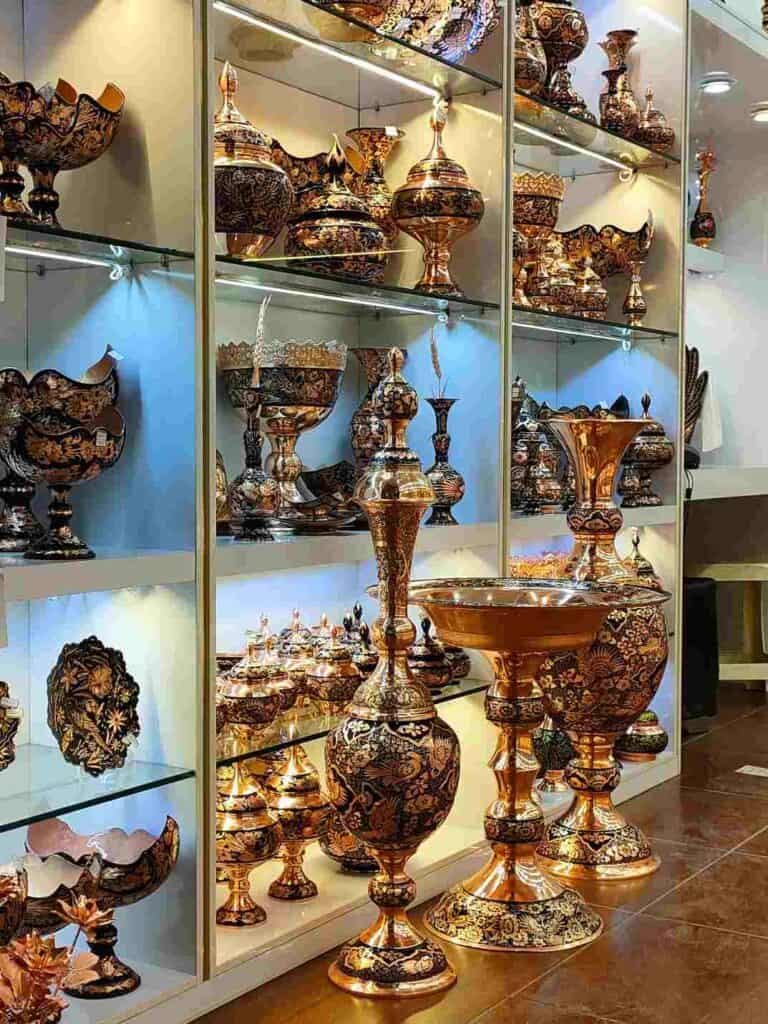
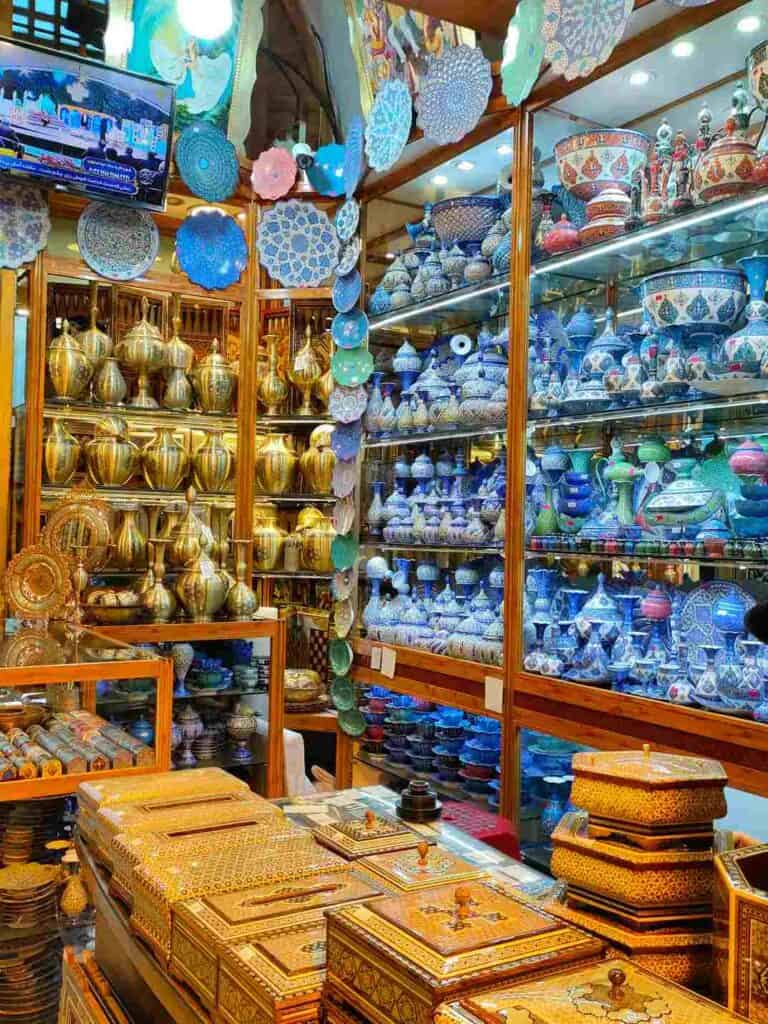
The turquoise inlaying in jewelry, copper, or brass is the most striking in Iran. This is the same turquoise that the famous mosques are decorated with.
The Persian carpet is the most unique and beautiful souvenir from Iran. Every city but even village and nomad family have its own type of carpet that differs in material and pattern. When you visit a carpet shop, they are happy to explain the story of the different rugs. Bazaars also sell all kinds of spices, dates, dried fruit, pistachio, and other types of nuts. Iran has top-quality saffron, especially the one grown around Mashhad, which is also a perfect souvenir.
Oh, and you should bargain for whatever you want to buy in Iran.
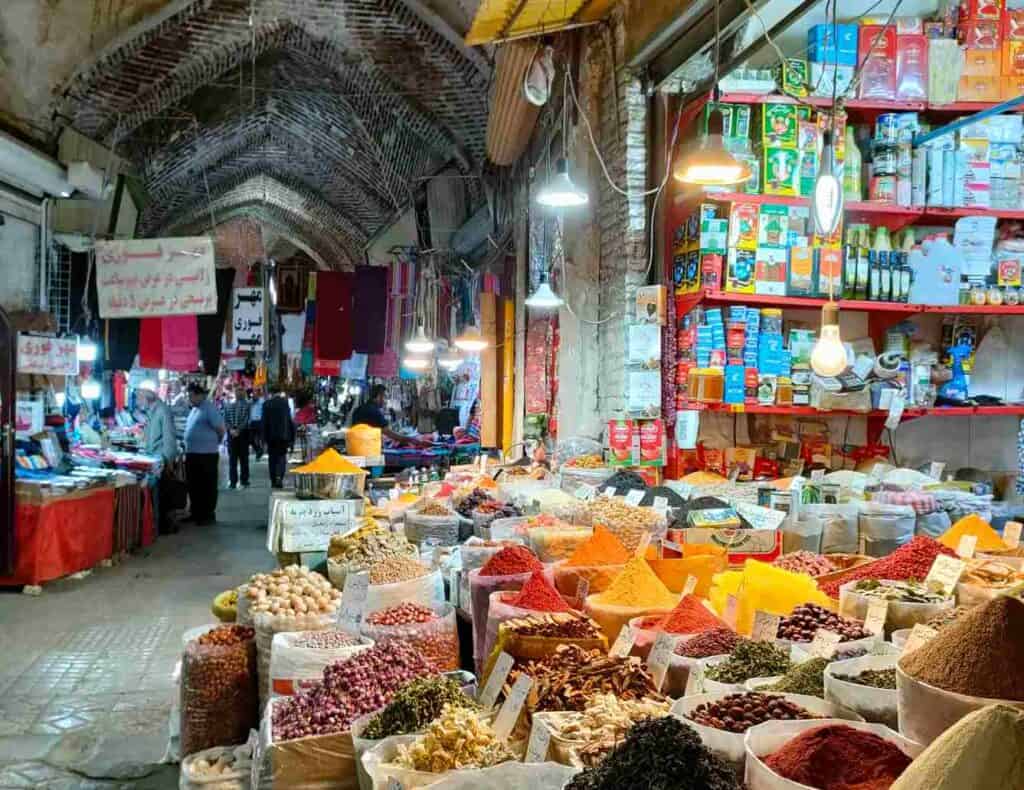
36. Do you want to know more about Iran?
There are travel guidebooks and other books about Iran’s ancient and modern history and culture to get a
better understanding. Iran is a special destination, and only by gaining deeper insight, you make the most
of your travel in Iran.
I recommend the Bradt travel guide for practical information about traveling to Iran.
To learn about Iranian culture and traditions, read Culture Smart: Iran.
To have a complete overview of the events that shaped the relations of the countries in the Middle East,
read Black Wave.
Read City of Lies and Reading Lolita in Tehran to learn more about the Iranian Revolution.
To learn more about Iran in the 1990s from the point of view of an American-Iranian journalist who tries to
find her identity between the two worlds as many other immigrants, read Lipstick Jihad.
And if you want to look for more books, I made this article about the best books to read about Iran that I constantly update.
Apart from reading, a great way to learn about the country is to talk to locals, hire a tour guide for at least
a day, or join group tours.
37. Movies about Iran
Persian movies often get international awards in film festivals, some even Oscar. Movies are one of the
best ways to understand Iran better. Some of the most well-known Iranian movies are:
Bashu, the Little Stranger by Bahram Beizai
A Separation by Asghar Fahradi
A Separation is the first Iranian movie that won the Oscar and Golden Globe for the Best Foreign Language
Film in 2012.
Taxi by Jafar Panahi
Offside by Jafar Panahi:
Taste of Cherry by Abbas Kiarostami
About Elly by Asghar Farhadi
Children of heaven by Majid Majidi
Hit the road by Panah Panahi
A hero by Asghar Fahradi
If you want to watch more Iranian movies check this article.
38. Ethnic groups and languages in Iran
The official language is Persian (Farsi). The Arabic letters but there are extra letters in the Persian alphabet, and they do not understand each other.
Young, educated people speak English, but many still do not. However, not everyone speaks Persian as their first language, as Persians only make up around 60% of the population. Azeri, Kurd, Lor, Baluch, Arab, Gilak, Mazani, Turkmen, Khorasani, and Tat ethnic groups are all part of Persia. They have their language and dialect, culture, costumes, and religion. Still, they are united in their homeland. When you travel across the country, you will encounter different ethnic groups.
In villages, the locals still wear traditional clothes and speak the local language. In Azerbaijan province in the northwest, the first language is Azeri or Turkish and Kurdish in the Kurdish part, in the Persian Gulf, Arab, and so on.
It is unique to have such cultural diversity in a single country.
39. How are the Iranian people
Iranian people are extremely friendly and easily go to foreigners. They are very social and do not like being alone. So, they quickly start to talk to people sitting next to them. For them, it is weird to have a bus or train journey in complete silence without chatting. They are easygoing, understand jokes, and young Iranians are highly educated. They have a good knowledge of the world. Usually, they are open to discussing any topic; there is no taboo.
Iranian men respect foreign women travelers and often offer their help.
Iranians are divided about religion. The younger generation and city dwellers are less religious. However, many people, especially in the countryside, consider Ayatollah Khamenei their protector and the regime as the protector of Islamic values. There are different opinions about wearing the hijab as well. Most women prefer unrestricted clothing, while others firmly stand up for veiling.
All in all, you will see that the kindness of the Iranian people will be the most memorable part of your trip.
40. “Taaroof “
And we come to an essential concept of Iranian life, the Taarof, the unwritten rules of politeness (or courtesy). It means that locals do not precisely say what they mean, and you should understand what is behind the words. It doesn’t look easy to understand what others want if they do not directly say that as a foreigner. But first, most travelers do not even know about “the Taroof,” which leads to misunderstandings.
Iranians often invite foreigners to their homes out of politeness. They believe that accepting the guest with warmth and respect attracts God’s blessing. Guests are offered the best place to sit and to serve themselves first. All eyes are on the guest. They press you as a guest to eat more. At the end of the visit, the host apologizes for the inappropriate food and for any inconvenience.
Even the taxi driver refuses first to accept money from the client. But it is only ritual politeness. He needs the money, of course. That all is so inconceivable for foreigners that some leave without paying. But how do you know if the person who invites you means it or is just “taarof”?
Please decline at least once the offer, and if the person insists, you can accept it. When the guests want to leave, the host insists that they stay. He will escort the guests to the front door, often to the street. This custom shows the hosts’ unwillingness to part from the guests.
41. Religion in Iran
Islam has two branches, the Sunnite and the Shiite. Sunnis make up 90% of the Muslim population in the world. Although 90% of the Shiites live in Iran, each Arab country in the Persian Gulf is home to a significant Shiite community. Azerbaijan, Iraq, and Bahrein are the other countries with a Shiite majority population. There is a remarkable Shiite community in Afghanistan, Pakistan, Turkey, Lebanon (the Druze), Syria (the Druze and the Alawites), Kuwait and Yemen.
The schism of Islam into Sunnite and Shiite branches happened in the 7th century, but it became the state religion of Persia during the Safavid dynasty in the 16th century.
What do Shias believe?
The Prophet Muhammad died in 632 without a successor, and some say without naming his heir. However, Fatima got married, so Muhammad had a son-in-law, Ali (he was a cousin of Muhammad too) , and two grandsons: Hussain and Hassan. Ali’s son, Hussain, became the 3rd Shia Imam after his brother.
Soon Ali collected followers who regarded him as Prophet Muhammed’s rightful successor, the first imam. They were called “Shiat Ali” (followers of Ali), hence the Shiite branch of Islam. The Shiite believe that Muhammad named Ali to be his follower during his pilgrimage to Mecca (Hajj). Ali’s son, Hussain, became the 3rd Shia Imam after his brother.
In year 680, on the 10th day of the first month of the Islam calendar (Muharram), the Sunni army of Yazid I surrounded the camp of Hussein in the desert near Karbala, which by this time consisted only of the most faithful Shiite believers, 72 warriors and their wives. He beheaded all the men.
Shia Muslims mourn Imam Hussein during their most important religious holiday, Ashura. They dress in black as a sign of mourning and hold common prayers. Yazd hosts the most spectacular Ashura ceremony. An eight-and-a-half meter high leaf-shaped structure called the Naqhl (meaning palm tree) is the center of the Ashura celebration. On this day, they decorate it with immense black textiles, daggers, swords, and mirrors. The Naqhl symbolizes the coffin of Imam Hussein and the other martyrs. Hundreds of young and older men take it on their backs and carry it around the square while mourning Hussein in religious chants. Some men sit at the top of the Naqhl and direct the passionate believers.
Zoroastrianism was born in Persia and was the dominant religion in pre-Islamic times. It still exists today, but the number of followers has decreased. Half of the Zoroastrian people, estimated at 150.000-200.000, live in Bombay in India. The second-largest community of about 25,000 are in Yazd and Kerman cities. Apart from Iran and India, some live in Pakistan and Azerbaijan.
The Armenians are undoubtedly the largest group of Christians in Iran, with some hundred thousand followers. The Bahai religion is an essential reformist movement in the Shia religion but is condemned by the Iranian authorities.
Despite the hostile relationship between Iran and Israel, Iran has a Jewish community of around 10,000 people. Most Jews live in Tehran, where there are 11 synagogues and two Kosher restaurants.
42. Nose job in Iran
Plastic surgery is almost a must in the upper class. Persian women usually don’t have big noses but prefer having smaller ones. It is nothing to hide or keep in secret—quite the contrary. Women proudly walk around with their bandaged noses that manifest their fresh surgery.
Nose surgery has become such a status symbol that some people do it because it is trendy. Many women also fill their wrinkles, breasts, and lips.
Iran is probably the most affordable destination for plastic surgery. A top-quality nose job costs 1500- 2500 USD in Iran. Because of the recent devaluation of the Iranian Rial, costs are only a fragment of what patients pay in Europe or Asia.
Nose jobs are said to be so popular because Iranian women have to cover their bodies, except their faces. A perfect nose and strong make-up are the way to show their feminine beauty. However, some go to extremes with that….
43. Clerics (mullah) with black or white turban
While traveling to Iran, you will see mullahs (priests) passing by in cloaks and black or white turbans, but mainly the latter. The color of the turban has an important meaning you should know about. Those wearing black turbans manifest that they are the descendants of Prophet Mohammad. The current president and supreme leader (ayatollah) are both wearing the back turban.
44. Persian food: Is it a good place for vegetarians?
Persian cuisine is exceptionally delicious, taking influence from India, Pakistan, and the Arab countries. But it is not a paradise for vegetarians as there are only a few meals that do not contain any meat.
This country has incredible food diversity, including local vegetables, fish from the Caspian Sea to heavy meat stews. Iranians do not spare spices either. Let’s not forget that 90% of the saffron in the world is grown in Iran.
Traditional Iranian cuisine includes stews, kebabs, mixed and plain rice, and soups.
Iranian kebab (made from beef, lamb, chicken, or fish), such as Barg, Kubideh, Shashlik, Jujeh, Uzun borun, is probably the most common specialty of Persian cuisine.
Iranian stews are usually served with rice. Other popular Persian meals are Dizi, Gheymeh, Ghormeh Sabzi, Bameih, Baghala Ghatogh and Fesenjun.
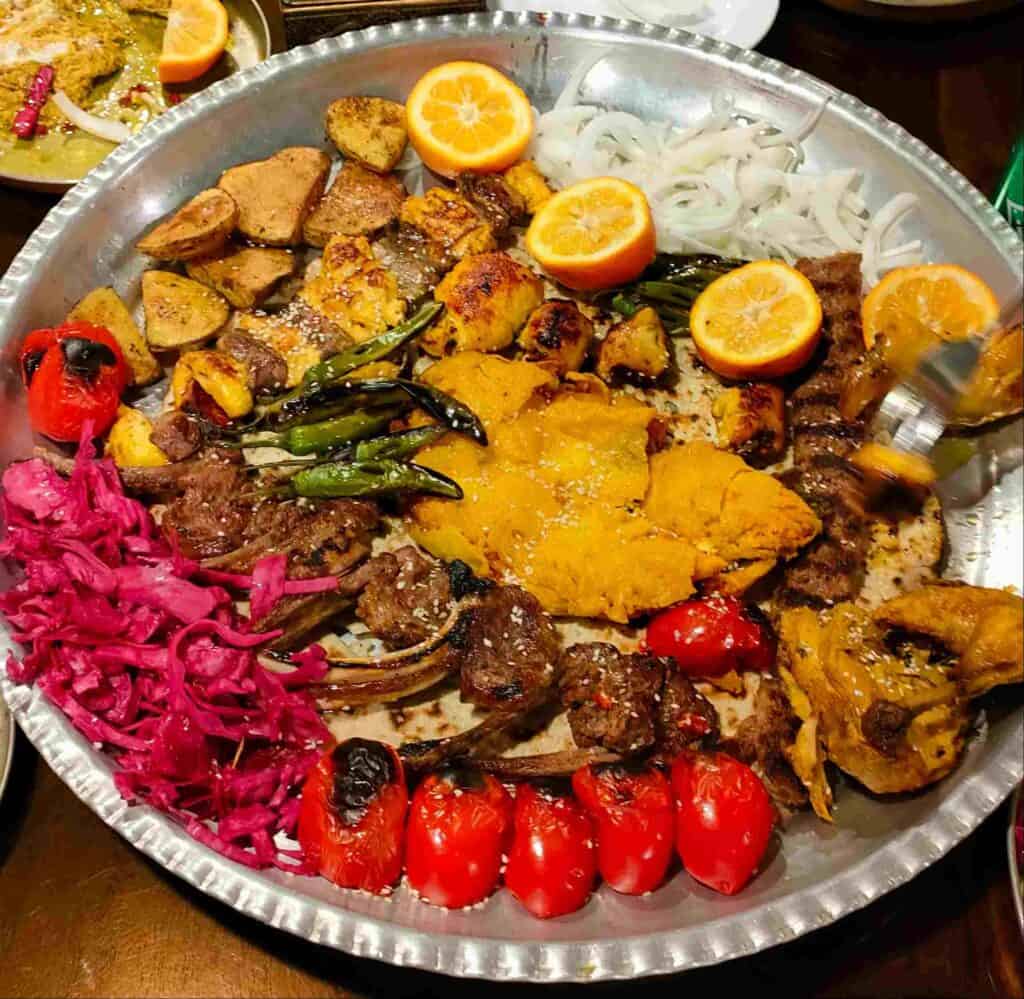
Iranian rice is cooked in two different ways: Kateh or Dami. The rice served with kebab is called Chelo, and the one with stew is called Polo. Baghala Polo, Adas Polo, Sabzi Polo, and Dampokhtak are some fo the famous Iranian dishes.
There are two types of soups in Iran. Dilute soups with a few ingredients are called “Soup.” Other thick soups are called “Ash.”
The most popular soups are Reshte, Jo, and Piaz. The most common Ashes are Ash-e Kashk, Shuli, Ash-e Gazaneh, and Ash-e Reshteh.
The bazaars in Iran offer one of the best quality dates, pistachio, and saffron in the world. Iran is famous for pomegranate, rose water and oil, Sumac spice, and Persian Shallot.
You can taste great sweets in Iran, and Faloodeh is probably the most well-known. There are more types of that.
The Shirazi Faloodeh comes with noodles, starch, rose, sugar, and water. They serve it in a frozen form with lemon juice and cherry syrup. Yazdi Fallodeh is made from strands of starch and is served with water, rose, and sugar syrup. It is not frozen, but they add ice to quench it.
The Faloodeh contains summer fruits, basil seed, and some sugar.
Gaz comes from Isfahan and Qottab, Loz, and Baklava from Yazd. There are more types of Baklavas in Iran, but the one in Yazd is the most famous. Tabriz city offers Turkish Baklava.
Drink tea in the Iranian way with the sugar cube in your mouth
Tea is always ready to be served to guests in an Iranian home. They are masters of tea preparation, which they brew in a samovar, the traditional Russian tea urn.
It is common to offer cucumbers and tomatoes, fresh fruit, nuts, and dry fruit before starting the meal.
45. Local cultural tours in Iran
Local tours are the best way to get a better understating of this amazing country. Even if you travel independently, you can participate in the local tours that interest you the most to make your travel more meaningful.
From Kashan:
Go to the Maranjab desert and salt lake.
Visit Abiyaneh, the red village, on a day trip from Kashan.
Check out the tours from Kashan.
From Isfahan:
A night in the desert and watching stars.
Go to the Mesr desert for two days
Half-day cooking class in Isfahan
Check out the tours in Isfahan
From Yazd:
Zoroastrian tour in Yazd and Taft
From Kerman:
One-day tour to the cave village of Meymand, one of the most famous villages in Iran
2-day trip to the Kalouts desert
From Shiraz:
You must spare time to visit Persepolis, Pasargadae and Nagsh-e Rostam
Spend a day with the nomads for one day
Learn about the Persian poets and culture in the city of literature, including a meal in a Persian home
I hope you find the above 44 tips for travelers to Iran useful and will help you better understand and prepare for your trip to Iran. There is so much misunderstanding about Iran, but it can easily become one of your favorite travel destinations. Iran is probably the budget travel option if you are looking for meaningful travel. If you have any questions, just leave a comment.
Other articles about Iran
What you can and cannot do in Iran
How to dress as a foreign traveler in Iran
The best books to read about Iran
The best 2-week itinerary in Iran (the classical route)
The best 2-week north Iran itinerary
All you need to know about the Iranian currency
The best places to visit in Tehran (museums, palaces, religious sites)
The best things to do in Tehran
Travel guide to Tabriz, North Iran
Travel guide to Mashhad, the holy city of Iran
Best things to do in Lahijan, the city of tea in Iran
Best things to do in Ramsar at the Caspian Sea
What to do in South Khorasan province?
More articles about the Middle East
Pin it for later!
